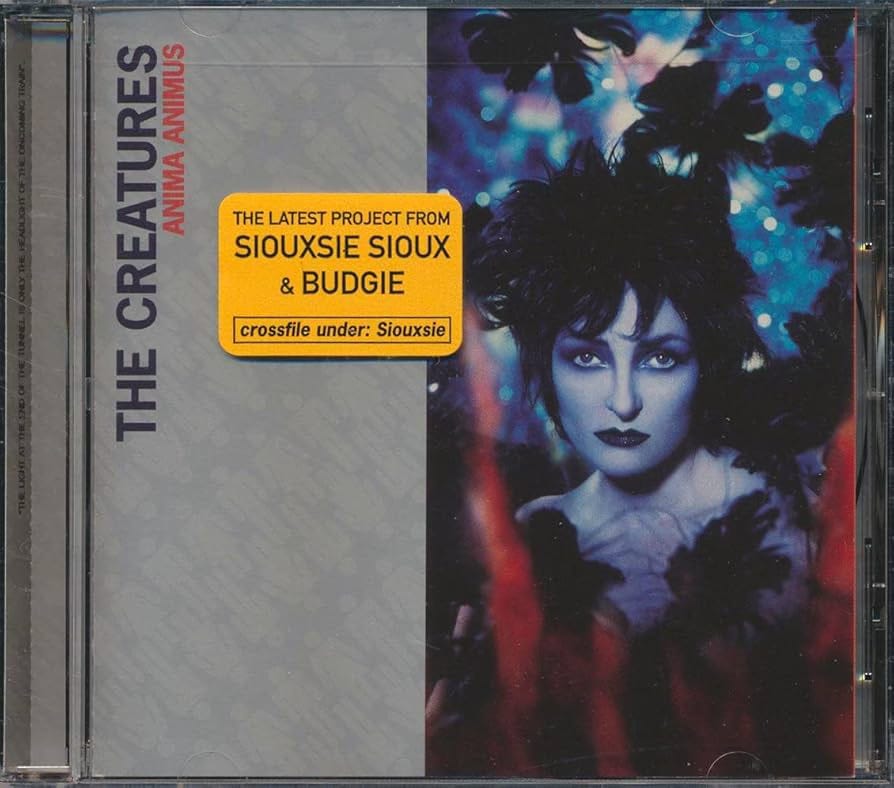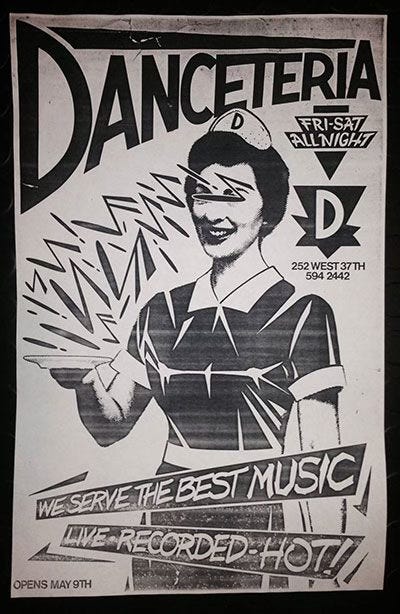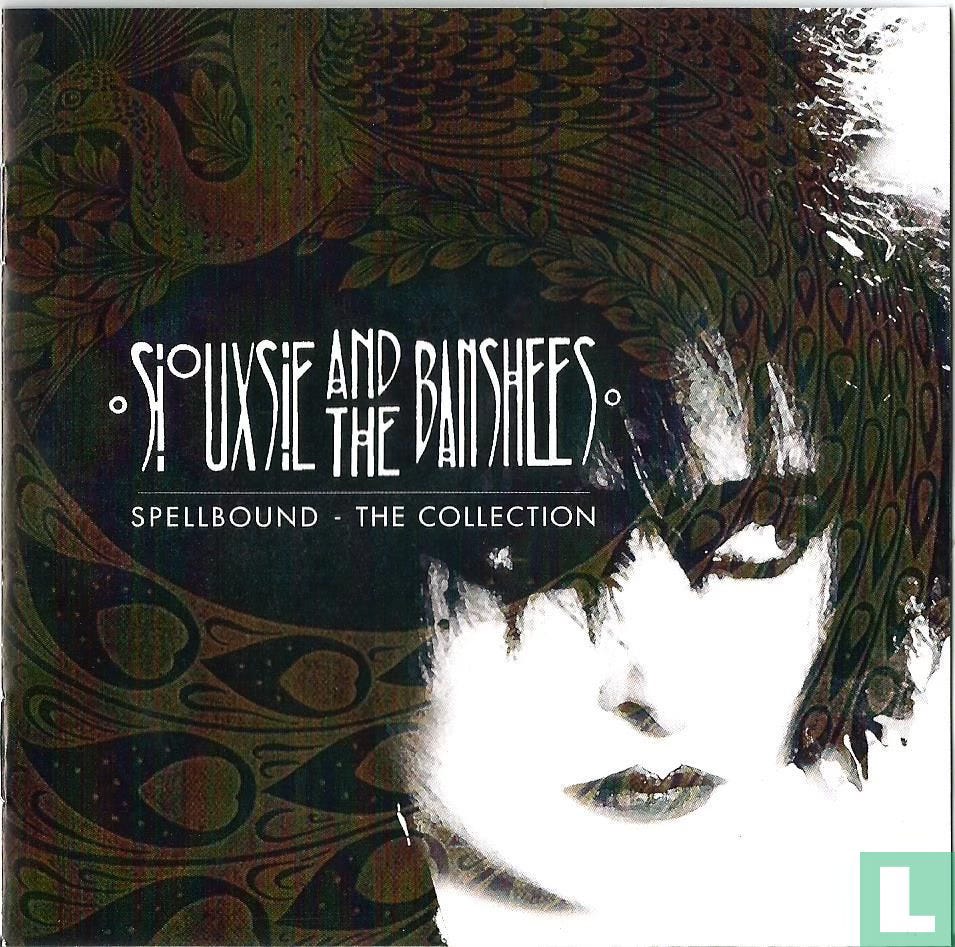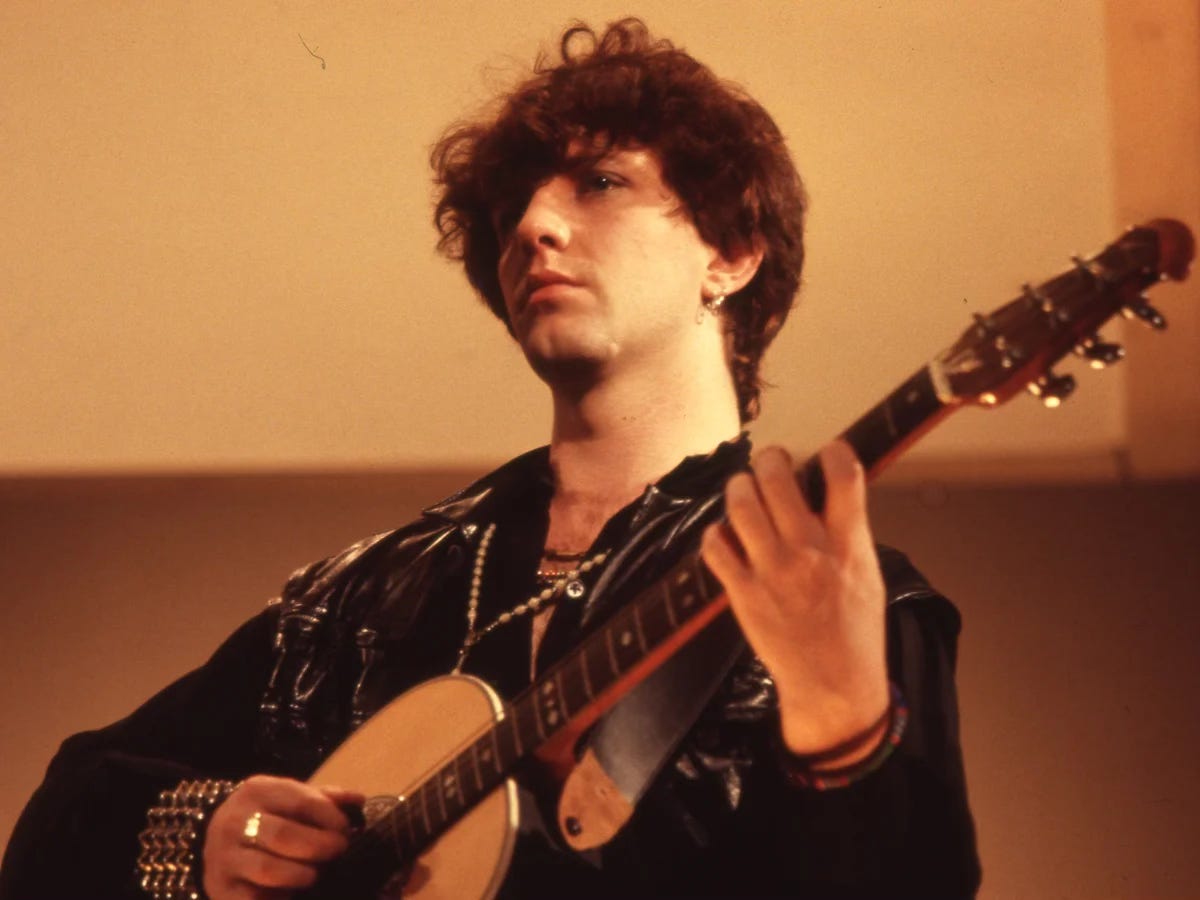🎧 Punk Meets the Dancefloor: How "Spellbound" Took Siouxsie An The Banshees into Clubland
The Twelve Inch 171 : Spellbound (Siouxsie & The Banshees)
In the late '90s, I was working at Universal Music Belgium. One of the perks was getting concert tickets, but since I handled catalogue and compilations ("the dead artists" as we joked), I rarely worked on shows. That meant I had time to go see whoever I wanted.
I’d always been a fan of Siouxsie and the Banshees. From the first time I heard "Hong Kong Garden," I was hooked. By the end of the '90s, the Banshees were more or less done, with their last album, The Rapture, released in 1995. But Siouxsie and Budgie had a side project, The Creatures. They’d just released Anima Animus and were touring.
Even though they were no longer signed to Universal, I managed to get a ticket. I was the only Universal staffer at the show and considered sneaking backstage to meet Siouxsie. That is, until she addressed the crowd in French, criticizing major record labels and suggesting that maybe the heads of those companies should be... removed (“cut off” was the literal translation🫣). I decided to skip the meet-and-greet.
I never saw them live again. But my love for their music stuck. So when I started this newsletter, it made sense to include one of their tracks.
Who were Siouxsie and the Banshees? Why did they conquer the US dancefloors but failed to crack the pop-charts (at first)? And why is Juju, the album that birthed “Spellbound,” also considered one of the earliest Gothic rock landmarks, even though the band bristled at that label?
Let’s rewind to the start of the story: a moment of punk rebellion that turned into one of the most influential careers in British music and got us all “Spellbound”
Welcome, I’m Pe Dupre and I’m really glad you’re here. This is “The Twelve Inch”, my newsletter that tells the history of dance music between 1975 and 1995, one twelve inch at a time.
If you’ve received this newsletter, then you either subscribed or someone forwarded it to you. If you fit into the latter and want to subscribe, please do so. That way you will not miss any of my weekly episodes.
💡 What Do Siouxsie and the Banshees Have to Do with Dance Music?
It’s a fair question. After all, they weren’t a “dance” band.
But if you look closer at the post-disco scene, especially in early '80s New York, you'll find punk, new wave, early electro, funk, and even rock records playing in the same clubs. After the "disco sucks" backlash, DJs at places like the Mudd Club and Danceteria built eclectic sets. Siouxsie and the Banshees fit right in.
The 12-inch single was a big part of that. In 1981, the band released an extended version of their track "Spellbound", the first time they embraced the dance format.
🎙️ From Chaos to Control: How the Banshees Began
Siouxsie and the Banshees formed in London in 1976. Their first gig, at the 100 Club Punk Festival, was a one-off provocation featuring Sid Vicious on drums. Siouxsie Sioux later recalled:
After that, the band split. But the taste of performing stuck. Siouxsie and bassist Steven Severin regrouped later that year, aiming to mix glam, punk, and film score-inspired sounds.
By 1978, they had a real record deal (Polydor) and a growing reputation. But in 1979, their guitarist and drummer quit. They held auditions and ended up with a new lineup: Budgie on drums, and John McGeoch, lured from the band Magazine, on guitar.
🔊 A Sound All Their Own
The new lineup brought a more experimental sound. Their 1980 album Kaleidoscope used synths, sitars, and drum machines. While touring for Kaleidoscope, they wrote much of what would become their next album, Juju.
“It felt like a solid, unified group around that time. A lot could be understood [between us] without anyone necessarily saying it.” Siouxsie said later.
🎧 The Spell of "Spellbound"
Released in June 1981, Juju was darker, more focused. “It wasn't pre-planned, but, as we were writing, we saw a definite thread running through the songs; almost a narrative to the album as a whole" said Steve Severin, The opening track and lead single, "Spellbound," sets the tone. Budgie’s drumming drives the song forward, while Siouxsie’s voice alternates between menace and melody:
“You hear laughter / Cracking through the walls / It sends you spinning / You have no choice”
The real power came from McGeoch’s guitar. His swirling, flanged riffs gave the track a feeling of flight. As Johnny Marr (The Smiths) later said:
“He took that artistic big bang [punk] into something so much more than just barre chord thrash,” “He wasn’t pretending to be in some crap spitting punk band. He wasn’t joining in the dumbing down brigade. His intention was to be modern and you hear that in the very deliberate choice of using the flanger on everything.”
Marr cited "Spellbound" as a key influence on his own playing, especially as the one of the key sources of his iconic breathless jangle, such as on “Bigmouth Strikes Again.” It remains one of Siouxsie and the Banshees’ most iconic songs, peaking at #22 in the UK.
🎶 A 12-Inch for the Clubs
Though “Spellbound” wasn’t remixed per se, the 12-inch single included an extended break. That alone was enough to land it in the US Billboard Disco Action chart, reaching #64.
Tim Lawrence, in Life and Death on the New York Dance Floor 1980-1983, explains how clubs were opening up to everything from new wave to funk:
Bands like the Banshees benefited from that openness. DJs like François Kevorkian and Mark Kamins played their tracks. Other songs like "Israel" also appeared on the US dance charts.
🎤 They Kept Going (Even If MTV Didn’t Care)
Despite dancefloor success, they didn’t break the US mainstream until years later. MTV wanted cleaner pop visuals. Siouxsie’s theatrical darkness didn’t fit.
One of their best 12 inch versions
Still, they released more dancefloor-ready 12-inch singles. "Dazzle" (1984) had a beautiful extended mix but was too erratic for clubs. "Cities in Dust" (1985), remixed by Steve Churchyard (Who had remixed Go West and…Sheila B Devotion 😁), worked better, reaching #17. Later, "Peek-A-Boo" hit #14, and "Kiss Them for Me" cracked the US top 10. Their most successful US dance single? "Fear (Of the Unknown)," which reached #6 in.. 1992.
⚡ McGeoch’s Genius—and Downfall
McGeoch’s guitar work was central to the Banshees’ sound. But his drinking escalated. In 1982, during a Madrid show, he played the wrong songs on stage. Budgie later explained:
“It became obvious that he didn’t know where he was.” “I thought he’d just gone too far that night, but much later he admitted that he’d been given a Valium to calm his nerves, cos he was shaking either from withdrawal or too much drinking. If we’d been noticing this we might have said the show can’t go on. But we weren’t.”
McGeoch eventually had to leave the band. He played with PIL and others, but died young at 48. Siouxsie later said:
“John McGeoch was my favourite guitarist of all time,” “He was into sound in an almost abstract way. I loved the fact that I could say, ‘I want this to sound like a horse falling off a cliff’, and he would know exactly what I meant. He was easily, without a shadow of a doubt, the most creative guitarist the Banshees ever had.”
🕵️ The Legacy of Juju
Juju is filled with vivid horror imagery, voodoo, murder, terror. It could have felt cartoonish. But the songwriting, melodies, and arrangements elevate it.
It became a key influence on the goth scene. The artwork, African fetish imagery, and the album title ("juju" meaning supernatural force) added to its aura. Bands like The Sisters of Mercy and Fields of the Nephilim took notes.
Still, the band rejected the "goth" label.
“Many goth bands have imitated Juju, but they simply ended up diluting it” said Siouxsie.
📽️ Still Spellbinding Decades Later
This was an absolute staple in my sets when I played local parties. Most people in Belgium probably only know the live version of the song.
Siouxsie and the Banshees kept releasing music through the '80s. Siouxsie explored percussion-heavy sounds with The Creatures. But Juju and "Spellbound" remain their most iconic work.
The song lived on in pop culture, featured in Stranger Things, True Blood, and covered (somewhat regrettably) by Duran Duran.
In 2022, Rolling Stone named it the second-best goth song ever:
“If there ever was a soundtrack for Halloween, Juju would be it” — Andi Harriman
For all the drama and darkness, "Spellbound" was also a dancefloor record. A punk band’s eerie masterpiece with just enough rhythm to keep the crowd moving. Proof that, sometimes, the disco ball spins even in the shadows.
🗣️ Your Turn
Were you already a fan of “Spellbound” when it came out? Did it catch you on a dancefloor or through late-night radio? Maybe you first discovered Siouxsie & The Banshees through one of the many artists they inspired.
💬 I’d love to hear your memories—drop them in the comments.
Further reading (or should I say watching)
There are a number of interesting video’s/links :
So You Wanna Hear More ?
I thought you would !
It’s fun to write about music but let’s be honest. Music is made to listen to.
Every week, together with this newsletter, I release a 1 hour beatmix on Mixcloud and Soundcloud. I start with the discussed twelve inch and follow up with 10/15 songs from the same timeframe/genre. The ideal soundtrack for…. Well whatever you like to do when you listen to dance music.
Listen to the Soundtrack of this week’s post on MIXCLOUD
Or on Youtube :
So what’s in this week’s mix ?
This week, I dive headfirst into the post-punk dance music of the early eighties, a scene bursting with creativity and shifting styles. Our journey moves across a wide range of subgenres that were lighting up dancefloors at the time.
We kick off with the excellent 12-inch mix of the track of the week: “Spellbound” by Siouxsie & The Banshees, a defining moment of dark, urgent energy. From there, we glide seamlessly into The Glove, a one-off side project by Robert Smith (The Cure) and Steven Severin (Siouxsie & The Banshees). Their track “Like An Animal” shares the same driving tension as “Spellbound,” making the transition between the two feel natural.
Next up is a cult German underground classic: “Suicide Commando” by No More. It’s a raw, minimal track that opens the door into early electro and new wave territory, paving the way for early New Romantic gems like Spandau Ballet’s “Reformation” and Visage’s debut single “Frequency 7.”
The mix is a true kaleidoscope of styles and origins. Alongside the UK’s post-punk foundation, we’ve got some great American New Wave from Our Daughters Wedding and Slow Children, plus a rare Spanish New Wave cut, “God’s Valley” by Van Cyborg, that deserves far more attention than it ever got.
We close out with a set of post-punk heavyweights: Sisters of Mercy’s “Alice,” B-Movie, and Echo & The Bunnymen, all swirling together into a gothic finale. With a BPM peaking at 146, you’ll need to stay on your toes if you plan on dancing this one through.
Enjoy
Next week, I’ll explore the moment Eurodisco began its “takeover”. I’ll dive into its origins and ask why European productions started gaining ground. Was it the bold, often sexual themes? The central track of the episode certainly doesn’t hold back.












Hong Kong Garden was on Rusty Egan's Playlist at the Blitz Club in London's Covent Garden in 1979, along with other unlikely floor fillers such as Throbbing Gristle, Magazine and Cabaret Voltaire , all on 7 inch only with not a remix in sight! This pioneering mixture certainly expanded the definition of material considered suitable for the dancefloor. Also worth noting that when Polydor finally signed Siouxsie and the Banshees in 1978, they had already been rejected by 7 labels including EMI, RCA, Chrysalis and CBS. Female fronted bands were still a novelty at the time, with marketing departments much more comfortable signing punk bands who could be promoted as all male streetgangs in the mould of The Clash.
Completely unknown to me, so it's been very interesting to read their story, and your story with their music. I love artists who defy genre categories. Nice work, Pe!